Getting Equal: Australia's first successful Aboriginal wages case
By Guest blogger: Elisabeth Gondwe and Tegan Burns - North Stradbroke Island Museum on Minjerribah | 13 September 2021
Guest blogger: Elisabeth Gondwe and Tegan Burns - North Stradbroke Island Museum on Minjerribah
Getting Equal is an exhibition that shares the story of the 'Aboriginal Gang' of the Dunwich Benevolent Asylum and their fight for equal wages. In 1944, after a 25 year campaign, Aboriginal workers at the Asylum gained equal wages almost 20 years before anywhere else in Australia. The Asylum closed shortly after with the Aboriginal Gang only getting equal wages for one and a half years. The major parts of the campaign were organised and run on the island by the Gang members. It deserves to be much better known.
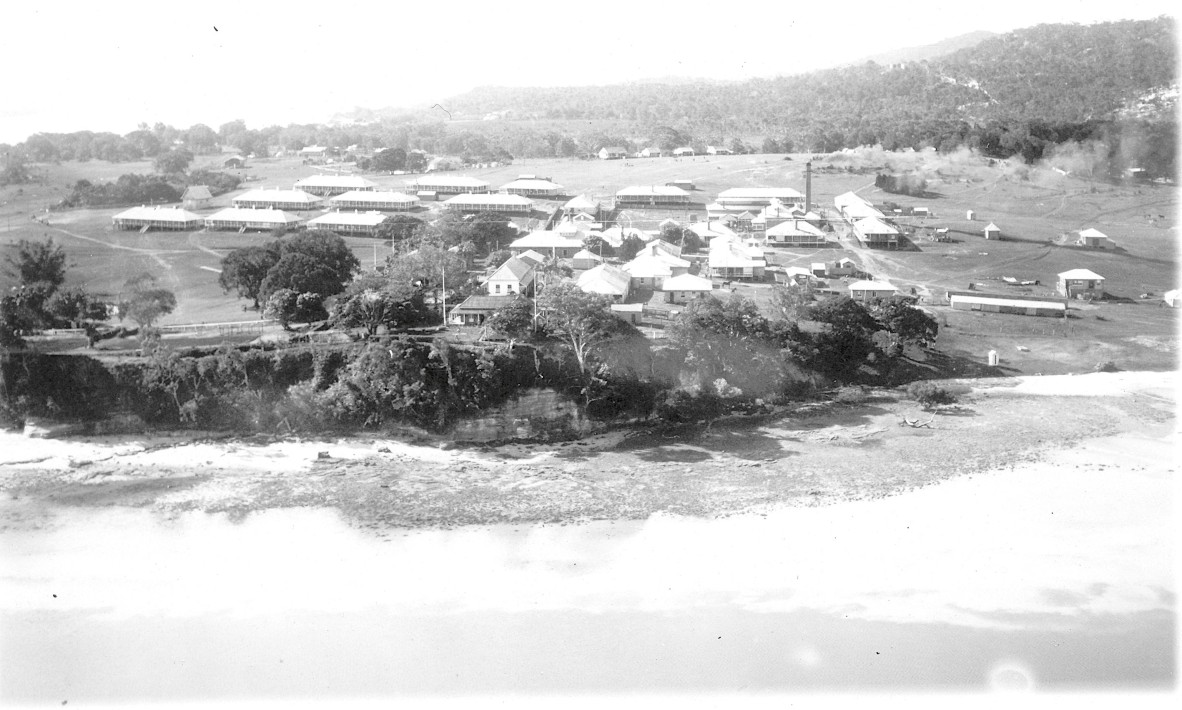
Dunwich Benevolent Asylum c.1900. Photo courtesy Tony Love.
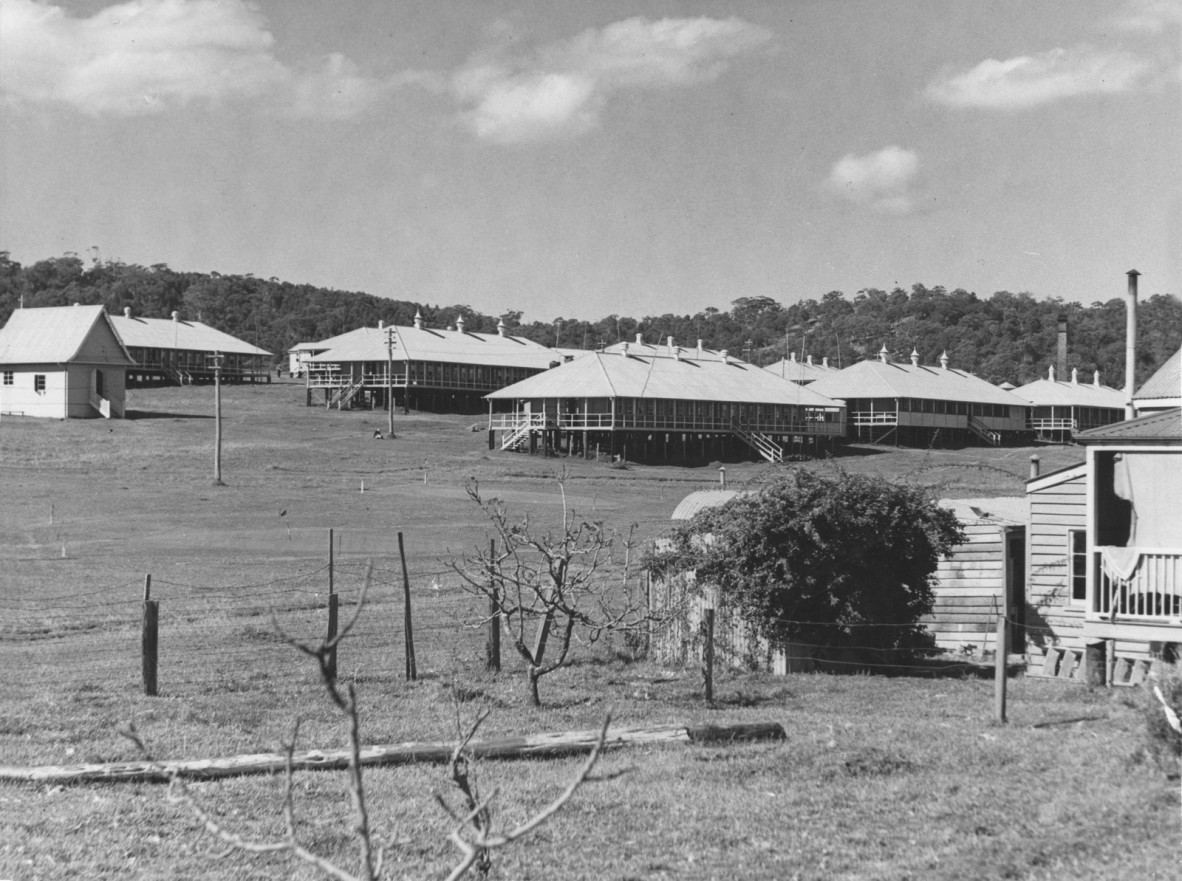
Buildings at the Dunwich Benevolent Institution, North Stradbroke Island, ca.1935. Negative number 62921, John Oxley Library, State Library of Queensland.
The Dunwich Benevolent Asylum was established in 1865 as a public institution for the poor and needy. It served the whole of Queensland until it closed in 1946. 21,000 inmates were brought to the Asylum over its life. At peak there were 1,200 inmates – three-quarters were men and mostly aged.
The Asylum became dependent on Aboriginal workers especially for heavy and outdoor work and unloading the supply boat. They became known as the Aboriginal Gang. Other Aboriginal men and women were employed in the wards and in domestic work and some as trades workers and boat crew.
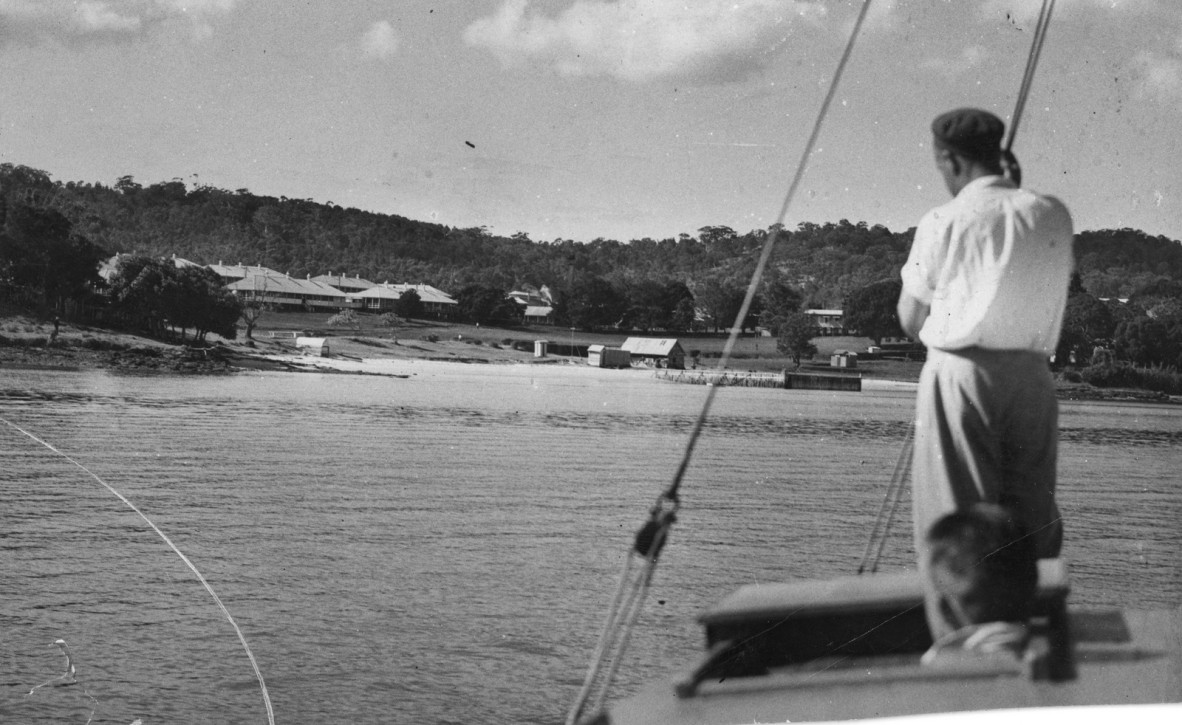
View approaching Dunwich from Peel Island, Queensland, ca. 1934. Negative number 62915, John Oxley Library, State Library of Queensland.
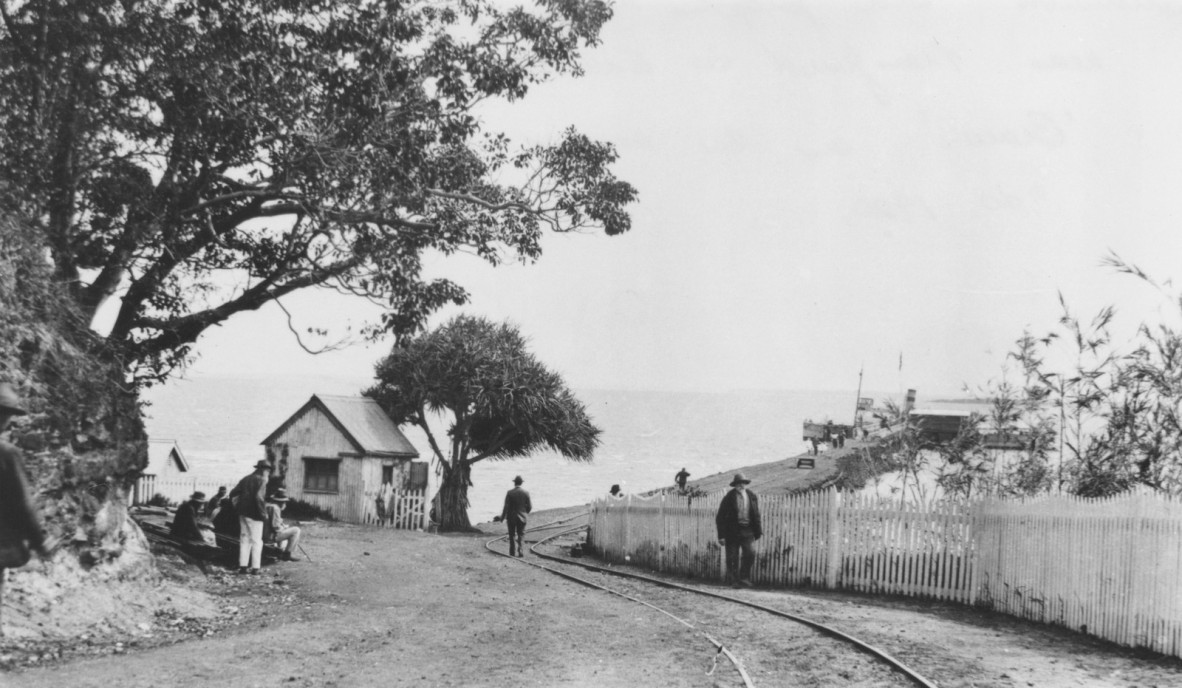
Aboriginal workers at the Dunwich Benevolent Asylum unloaded goods from supply boats here at the Dunwich jetty.
Steamer 'Otter' at the Dunwich Benevolent Asylum jetty, Queensland, ca. 1915. Negative number 98837, John Oxley Library, State Library of Queensland.
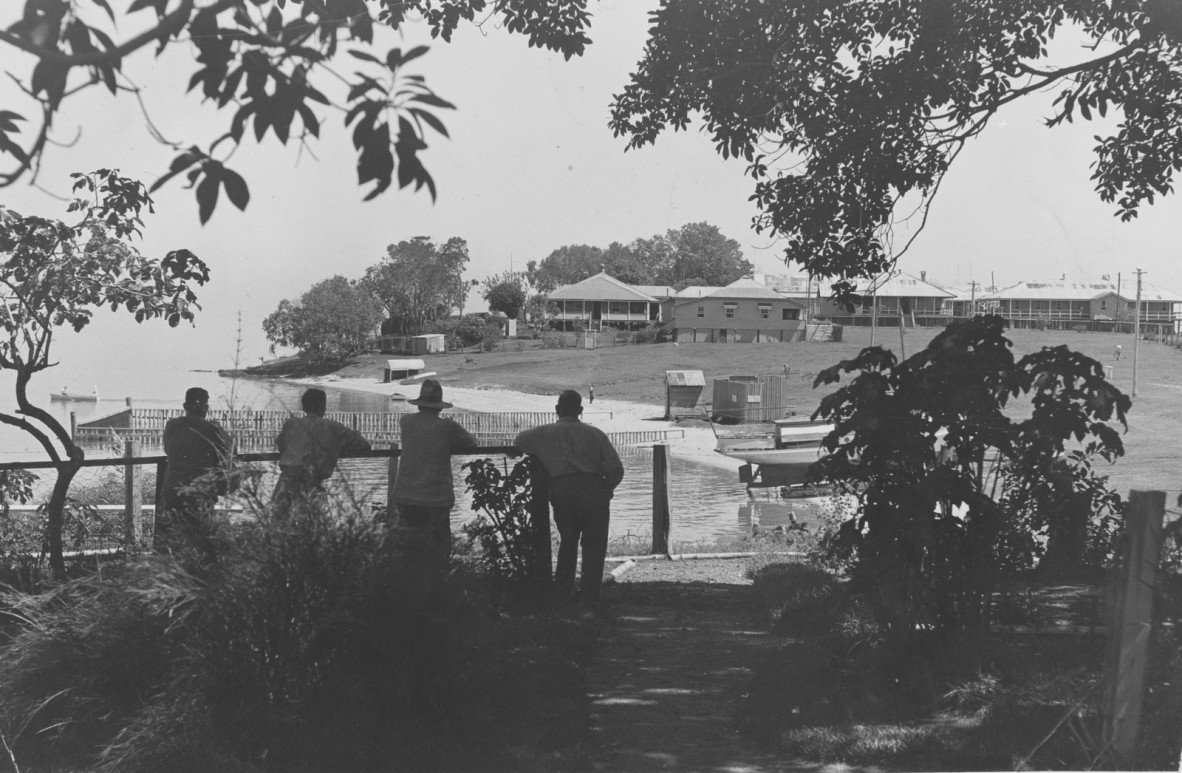
Four men leaning on a fence overlooking the benevolent asylum at Dunwich, Queensland, 1938. Negative number 53682, John Oxley Library, State Library of Queensland.
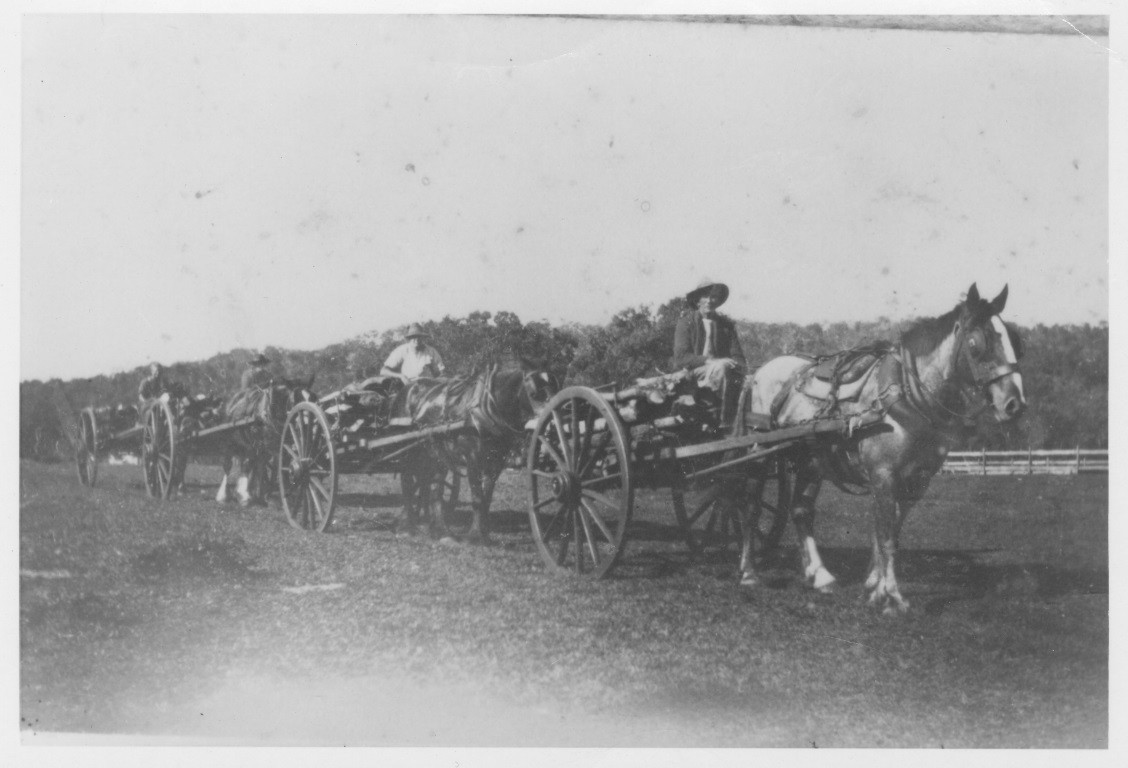
Dunwich drays with cordwood. Photo courtesy Robert Anderson.
Although the Asylum would not have functioned without the Aboriginal workforce, only those Aboriginal people employed as government staff enjoyed the same pay and conditions as the white workers. The Aboriginal Gang were paid a mixture of rations and money and often some of the money was paid into bank accounts supposedly on their behalf. They were very aware of the lack of equality.
With the start of the arbitration system in 1915, the Aboriginal Gang were paid much less than Basic Wage and industry awards.
The Gang campaigned for higher wages and to be paid in money. The campaign included a strike in 1918 which was probably one of the first by Aboriginal workers anywhere in Australia.
The campaign continued with petitions and deputations to Government Ministers. The Aboriginal workers ran the campaign with some help from the Australian Workers Union. Actions included:
- A strike on the wharf in 1918 and petition to the Superintendent for higher wages
- Leading Queensland-wide protests in 1921 about wage deductions to the Aborigines Property Protection Account.
- Joining Australian Workers Union (AWU) and seeking union action especially in 1926
- Deputation in 1933 to Minister Hanlon about being paid entirely in cash
- 1936 demand for 1 week’s paid annual holiday
- 1937 petition about Banking Sheet and being forced to allow employer to make deductions from wages
- 1938 deputation to Minister Hanlon
- 1938 joined Aborigines Progressive Association
- 1942 agitation for increased wages
- 1944 letter and petition and delegation to Minister
It was before the big Pilbara Strike of 1945-49 and the Gurindji walk-off from Wave Hill in 1966. Equal wages were not achieved in the Pastoral Industry – the largest employer of Aboriginal people - until 1965. In Queensland, wages continued to be stolen throughout the Bjelke-Petersen era.
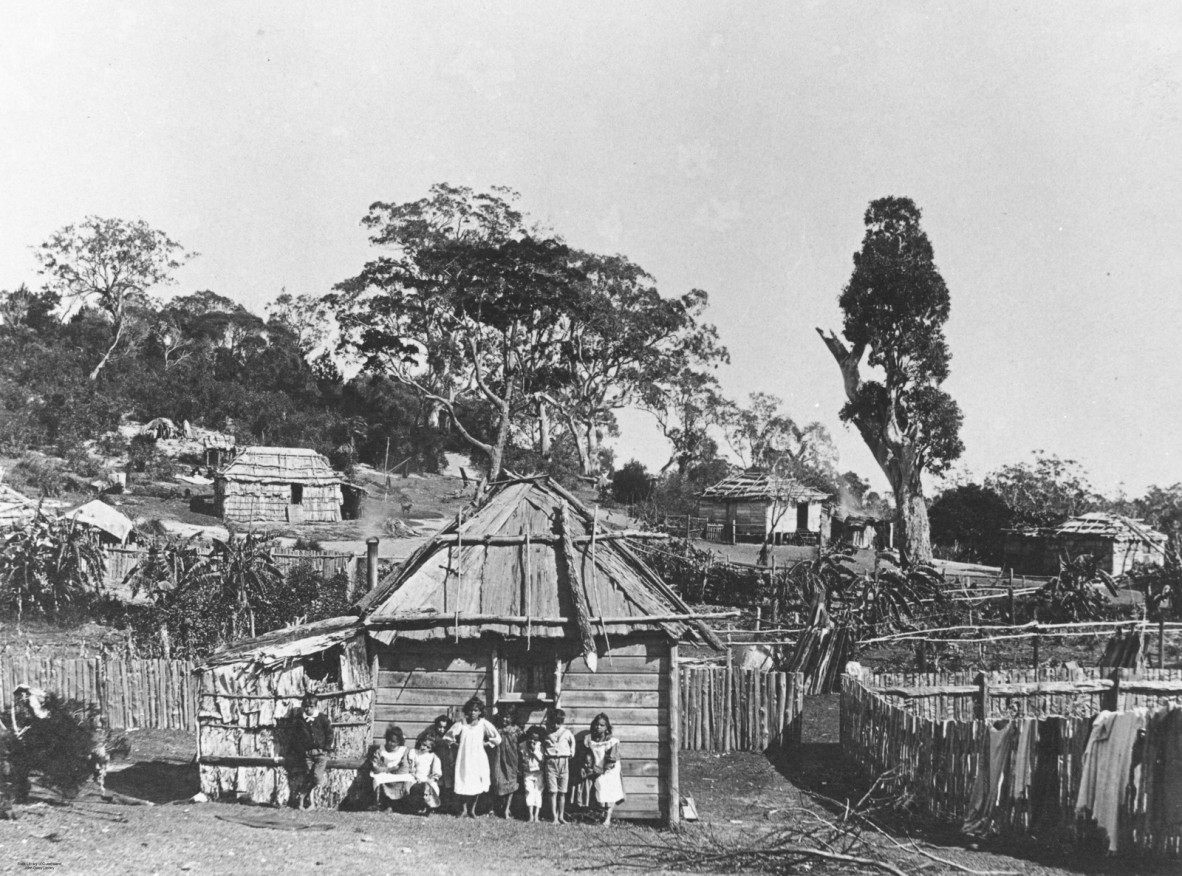
Myora Mission, Stradbroke Island, ca. 1891. Home to many of Aboriginal workers from the Dunwich Benevolent Asylum. Negative number 41682, John Oxley Library, State Library of Queensland.
The Getting Equal exhibition includes a film which includes interviews with family members of those who struggled for fairness in the 1920-1940s. It also documents the work done by Aboriginal people, how and where they and their families lived. This includes telling some of the stories from the One Mile settlement and the relations between Aboriginal people and the Asylum Superintendent who was the face of the State Government on the Island and served as the local ‘Protector of Aborigines’.
To assist with creating the exhibition, the museum received a Redland City Council RADF Grant for graphic design and film making. The film, Banding Together was made with descendants of the workers with assistance from local film maker Angie Simms from Stradbroke Island Photography.
The graphic design was done by Daniel Bunce and includes a map of Goompi/Dunwich showing the buildings of the Dunwich Benevolent Asylum overlaying the contemporary town. Artefacts on display include tools on loan from the family of Harold Iselin who was the plumber at the asylum. Also on display is a basket made by Granny Nuningha (Mrs Rose Martin) at the Myora Mission. It is kindly loaned to the museum by Karina Maxwell. There are many more artefacts, photographs, and documents to see. Oral Histories are a major part of the exhibition.
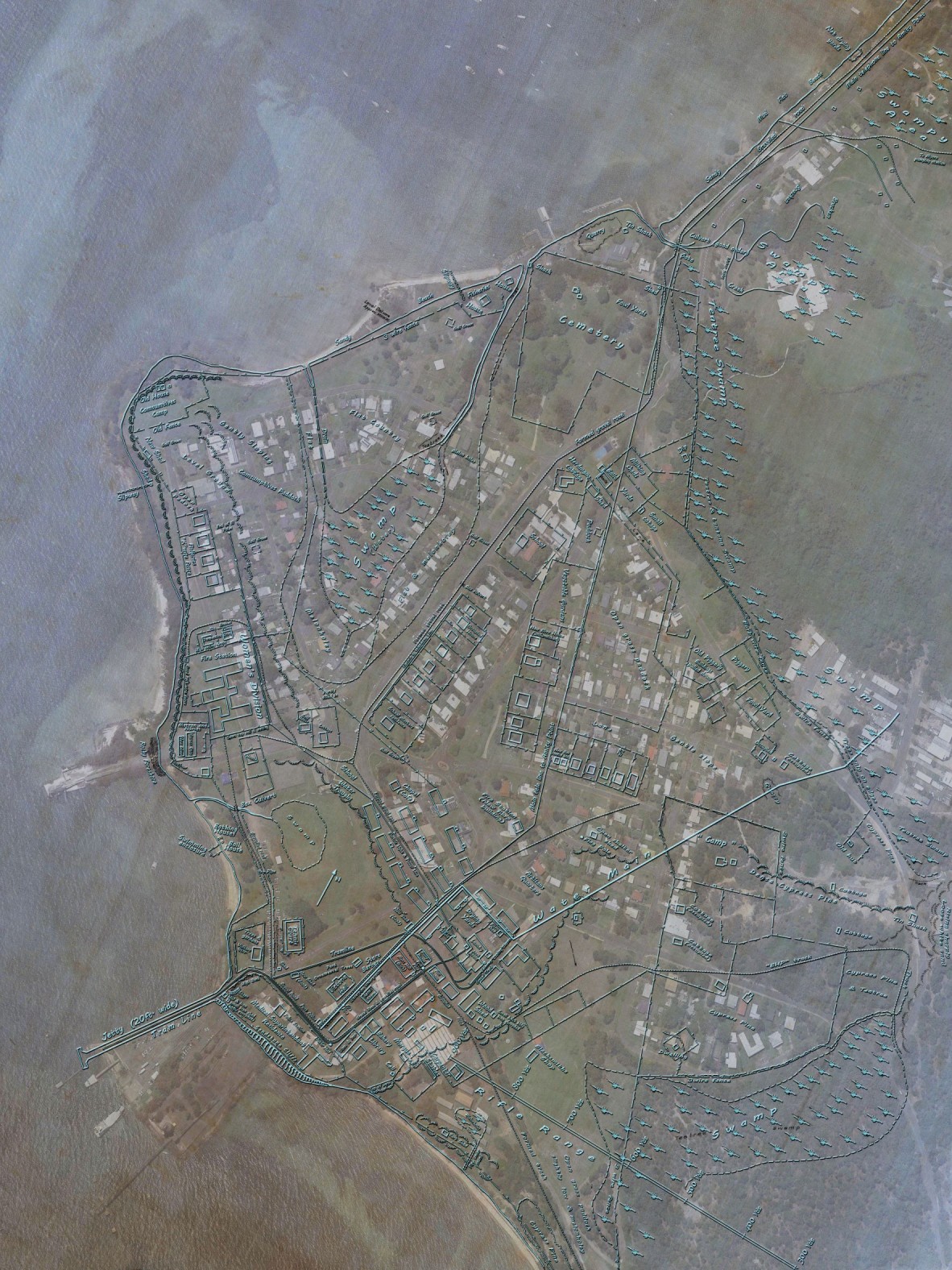
This map is a compilation of two survey plans of the Dunwich Benevolent Asylum overlaid on a current google earth image of Dunwich. Sketch survey map of the Dunwich Benevolent Asylum by David Dietrichson, surveyor 1913. Plan of feature survey of Dunwich. C.J. Gu, surveyor, 1947. Graphic design by Daniel Bunce.
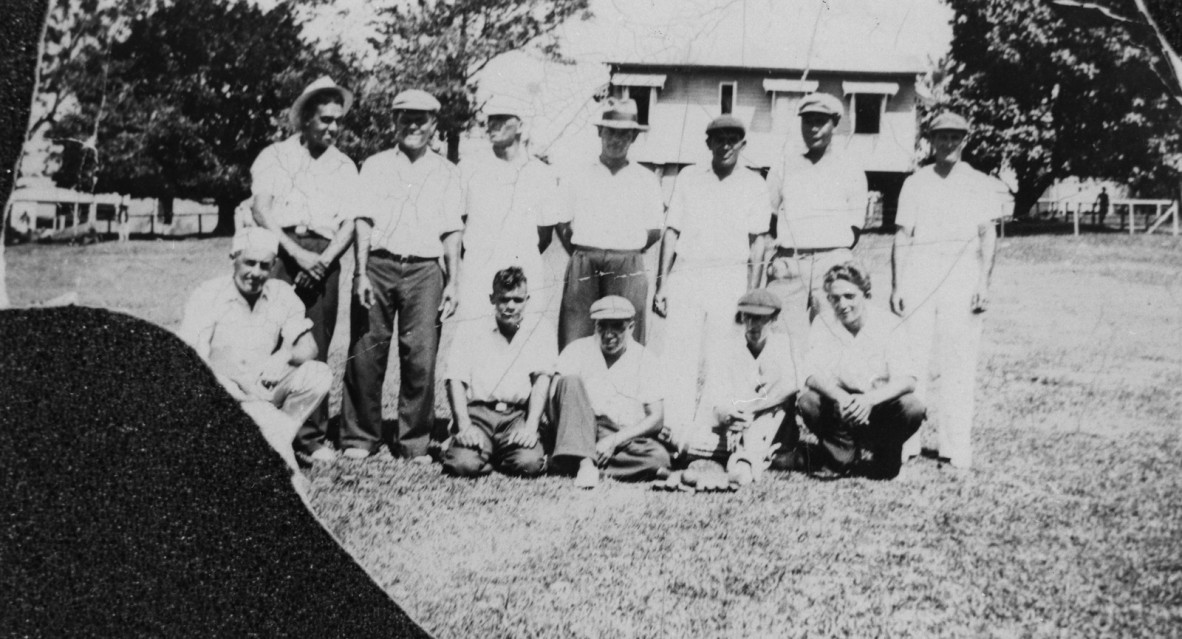
Dunwich cricket team, Queensland, ca. 1930. Negative number 153538, John Oxley Library, State Library of Queensland.
The exhibition is a fitting part of the museum’s Walking Together approach which celebrates at least 25,000 years of First Nations’ peoples through to the shared history after the brutal dispossession of the 1820 -30s.
Getting Equal will be on at the North Stradbroke Museum from August 2021 to September 2022. Some of the story of the wage campaign is told in the Museum’s 2019 book ‘Paltry Paradise: A History of the Dunwich Benevolent Asylum’, available from the museum. An exhibition catalogue will also be available for purchase at the Museum shop.
For further information please contact the Museum on info@stradbrokemuseum.com.au or 07 3409 9699. This Project is being assisted by a Regional Arts Development Fund (RADF) Grant
Elisabeth Gondwe and Tegan Burns
Related items from the John Oxley Library collection
- All items in the John Oxley Library collection about the Dunwich Benevolent Asylum.
- Digitised photographs of the Dunwich Benevolent Asylum.
- Digitised photographs of Aborigines Stradbroke Island
- Book: A paltry paradise : a history of the Dunwich Benevolent Asylum by Howard Guille. Tingalpa, QLD : Boolarong Press ; 2019
- Book: A brief introduction to the Dunwich Benevolent Asylum by North Stradbroke Island Historical Museum. Dunwich, Qld. : North Stradbroke Island Historical Museum ; 2017
- Blog: Returned Soldiers in the Dunwich Benevolent Asylum
- Blog: Historical board game based on the Dunwich Benevolent Asylum
- Blog: Dunwich Benevolent Asylum provides significant evidence of Queensland history
- The Benevolent Asylum of Dunwich digital story, 2009. Althea Vickers ; Elisabeth Gondwe; Clementine Ford. 10085 Storylines - Q150 digital stories 2009
The Benevolent Asylum of Dunwich
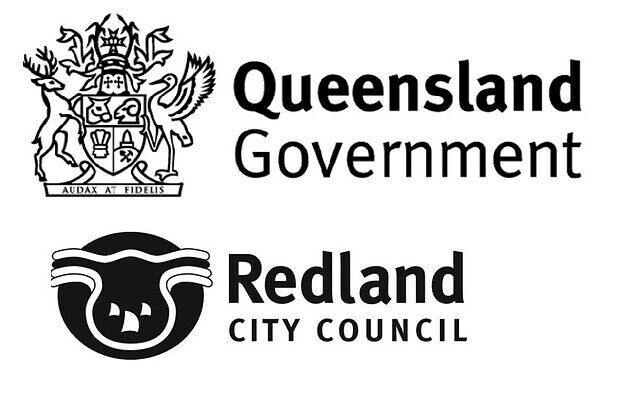
Getting Equal exhibition supported by the Queensland Government's Regional Arts Development Grant (RADF) grant and the Redlands City Council.
Comments
Your email address will not be published.
We welcome relevant, respectful comments.